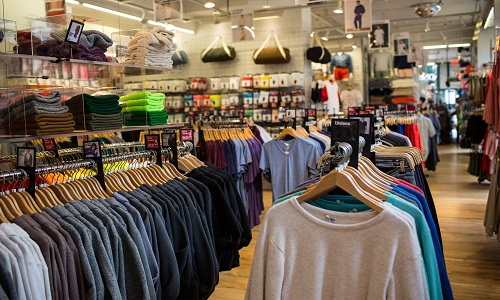"Gone are the days when fast fashion brands could lure customers to the store to possess the most inspirational label. Even a decade back every teenager’s dream was own a Calvin Klein, a Ralph Lauren or a Tommy Hilfiger. Each has a distinctive style well portrayed in glossy advertisements to create the aspiration in the consumer psyche."

Gone are the days when fast fashion brands could lure customers to the store to possess the most inspirational label. Even a decade back every teenager’s dream was own a Calvin Klein, a Ralph Lauren or a Tommy Hilfiger. Each has a distinctive style well portrayed in glossy advertisements to create the aspiration in the consumer psyche. Today the scenario has changed. Interestingly these attractive, million dollar ads somehow fail to create similar excitement which has resulted in plunging sales. In fact, a few legendary American brands which pioneered ‘fast fashion’ and ‘aspirational brand’ are now facing a downward spiral in sales, giving a clear indication towards shifting consumer psyche. Brands like Calvin Klein, Michael Kors, Tommy Hilfiger and Ralph Lauren are coping with slow sales and shutting down stores.
Biggies suffered from being class to mass

Analysing the changed market behavior, Charles Lawry, a professor at Pace University's business school specializing in studying luxury market says “high-end American brands have been creating cheaper products for decades now. Ralph Lauren was one of the first American luxury brands to reach across many different categories, and that is really what made it successful. For a time, this strategy was extremely lucrative; soon, other brands followed suit, including MK by Michael Kors and Donna Karan's DKNY”. During early 2000s, fashion brands like Donna Karan, Ralph Lauren, and Coach became public company while by 2010, Phillips Van Heusen Corp owned both Calvin Klein and Tommy Hilfiger. With new set of investors coming on board, almost all companies were forced to explore the bigger market instead of the niche luxury segment. To sustain the growth brands lowered the cost of manufacturing to making the brand accessible to new a wider spectrum of consumers. “There was an over-expansion and distribution into places like factory stores, which presented a tremendous economic opportunity. But it came at the expense of the brand. If you start training the consumer to believe that the brand is widely distributed in factory outlets, people who were once your core customer will start doing that, or lose interest in the brand altogether” says Eric Korman, Ralph Lauren's president of digital and e-commerce between 2010-2014.
Dip in sales was also a result of low skilled manpower engage in manufacturing set up in countries like Vietnam and China. With globalization and an effort to cut cost by going overseas, these megabrands that were once known for high quality started to see their quality deplete and decay. Moreover, in 2008, the US economy hit new lows due to recession. During the recession and post-recession, these brands went further by having a lot of these products trickle down to discount retailers. Now there's nothing remotely glamorous about picking up that same Coach bag in a messy, overcrowded department store with harsh lighting and thousands upon thousands of mass-produced articles.
New Age brands take on the giants
Over the last few years, the market dynamics has changed with a new generation of high quality, reasonably priced and direct to consumer brand coming up. Big brands were focused to tap wider customers and in the process lose their uniqueness. Startup companies too saw this opportunity to redefine premium fashion and educate customers about how high-end goods are made. The internet did not made it easier to buy products online. Another important distinction between these fashion startups and older apparel companies is that they are much less flashy. The internet has democratized brands. People are willing to pay for something special and they want to know how their products are made and, these days, it is possible to find exactly what they are looking for online. Now, the big question is whether the once great American brands can right their ships and regain consumer trust by improving quality, cutting back distribution channels, and speaking to the world in a more relatable voice.












